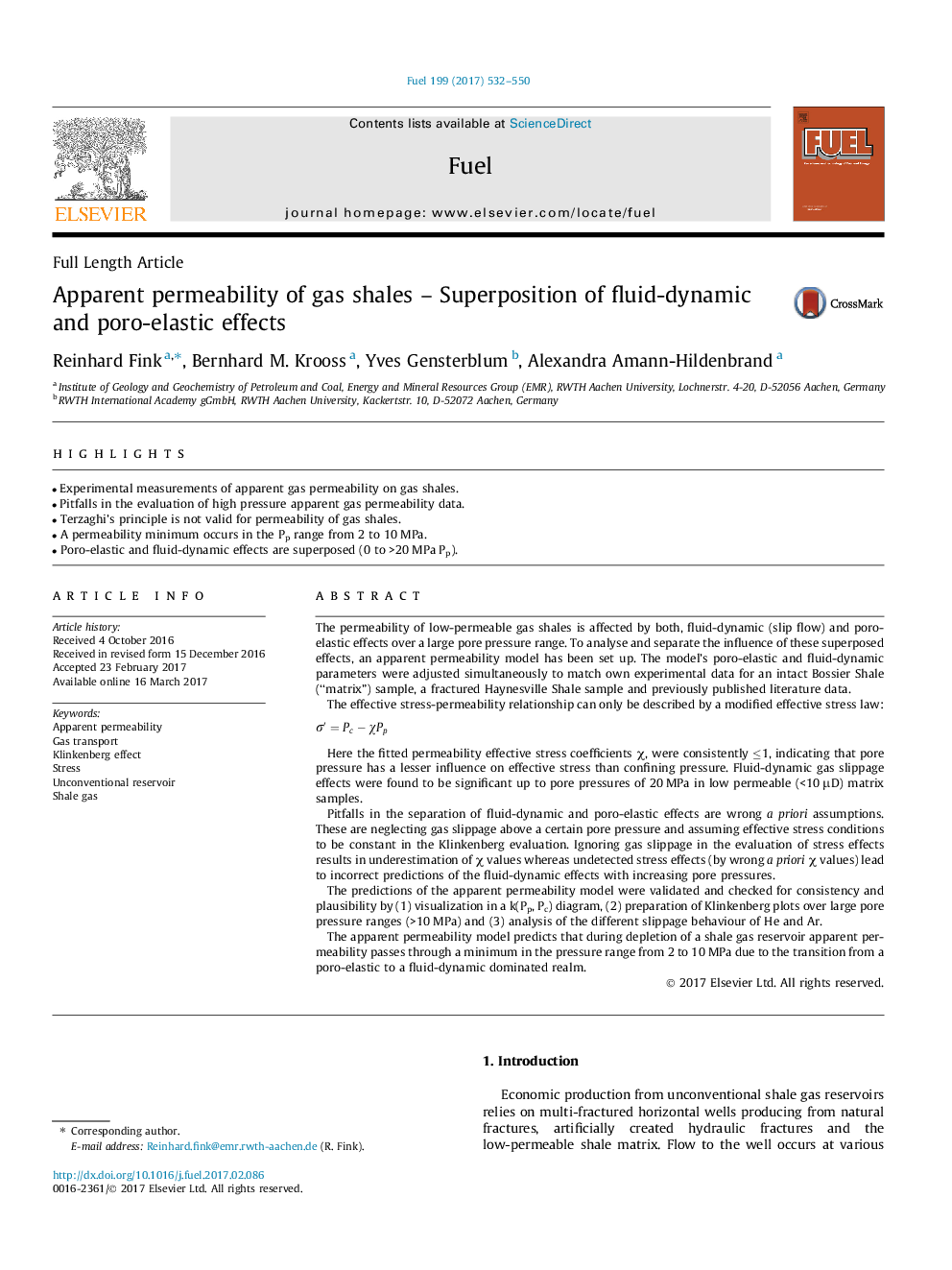| Article ID | Journal | Published Year | Pages | File Type |
|---|---|---|---|---|
| 6474823 | Fuel | 2017 | 19 Pages |
â¢Experimental measurements of apparent gas permeability on gas shales.â¢Pitfalls in the evaluation of high pressure apparent gas permeability data.â¢Terzaghi's principle is not valid for permeability of gas shales.â¢A permeability minimum occurs in the Pp range from 2 to 10 MPa.â¢Poro-elastic and fluid-dynamic effects are superposed (0 to >20 MPa Pp).
The permeability of low-permeable gas shales is affected by both, fluid-dynamic (slip flow) and poro-elastic effects over a large pore pressure range. To analyse and separate the influence of these superposed effects, an apparent permeability model has been set up. The model's poro-elastic and fluid-dynamic parameters were adjusted simultaneously to match own experimental data for an intact Bossier Shale (“matrix”) sample, a fractured Haynesville Shale sample and previously published literature data.The effective stress-permeability relationship can only be described by a modified effective stress law:Ïâ²=Pc-ÏPpHere the fitted permeability effective stress coefficients Ï, were consistently â¤1, indicating that pore pressure has a lesser influence on effective stress than confining pressure. Fluid-dynamic gas slippage effects were found to be significant up to pore pressures of 20 MPa in low permeable (<10 μD) matrix samples.Pitfalls in the separation of fluid-dynamic and poro-elastic effects are wrong a priori assumptions. These are neglecting gas slippage above a certain pore pressure and assuming effective stress conditions to be constant in the Klinkenberg evaluation. Ignoring gas slippage in the evaluation of stress effects results in underestimation of Ï values whereas undetected stress effects (by wrong a priori Ï values) lead to incorrect predictions of the fluid-dynamic effects with increasing pore pressures.The predictions of the apparent permeability model were validated and checked for consistency and plausibility by (1) visualization in a k(Pp, Pc) diagram, (2) preparation of Klinkenberg plots over large pore pressure ranges (>10 MPa) and (3) analysis of the different slippage behaviour of He and Ar.The apparent permeability model predicts that during depletion of a shale gas reservoir apparent permeability passes through a minimum in the pressure range from 2 to 10 MPa due to the transition from a poro-elastic to a fluid-dynamic dominated realm.
